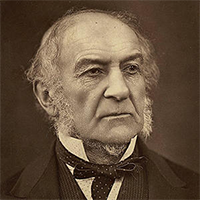The United Kingdom's Reform Act of 1884
The Reform Act 1884 added 6 million more men to the voter rolls in the United Kingdom. The bill did not, however, grant universal suffrage. Gaining the vote continued to be a point of focus for many in the working trades as the 19th Century progressed. The Reform Act 1832 had expanded the voter rolls by a few hundred thousand, but the number of people who could vote was still a small minority of the overall population. The Reform Act 1867 had added 1.5 million more men to the voter rolls, but it was still only one-third of all eligible males in the population. The idea of universal suffrage was still a popular one. 
In 1880, William Gladstone and the Liberal Party won a majority of the seats in the House of Commons, ousting the leadership of Conservative Benjamin Disraeli. Gladstone, even though he supported the Second Reform Act, was disappointed that it didn't bring the vote to men living in rural areas. He resolved to do this with another reform bill, which he introduced in 1884. The Conservative Party opposed the bill, as did some members of Gladstone's own party. Another strong voice against universal suffrage was Queen Victoria. Another element of the debate over suffrage at this point in time was the inclusion of women in the voter rolls; the queen was definitely opposed to this proposal. Gladstone had enough support in the House of Commons to get the bill passed there. As before, however, the House of Lords rejected the bill. As before as well, a mass demonstration took place in favor of reform. The London Trades Council put out the call, and 30,000 people gathered at Hyde Park on July 21 to advocate for suffrage. Joseph Chamberlain, President of the Board of Trade, made a speech at the demonstration. Gladstone and other Liberals turned up the heat on the Lords, raising the specter of social revolution if they did not get onboard. The U.K. had been spared the kind of social unrest that had plagued several other European powers in the Revolutions of 1848, but the events of that year were still fresh in the minds of many inside Westminster and out. Gladstone reintroduced the reform bill, and it was passed by the Commons and then the Lords, but only after Gladstone had agreed to champion a subsequent bill redistributing seats in Parliament. In effect, the Third Reform Act gave to working men in rural areas the same rights as men living in boroughs. What this meant in practice is that in order to vote, a man had to either own property or rent unfurnished lodgings at the value of £a year. This added another 6 million names to the voters rolls. However, even after this third in what conservatives saw as a series of concessions, the total percentage of men who could vote was still 60 percent. No women could vote. |
|
Social Studies for Kids
copyright 2002–2025
David White




